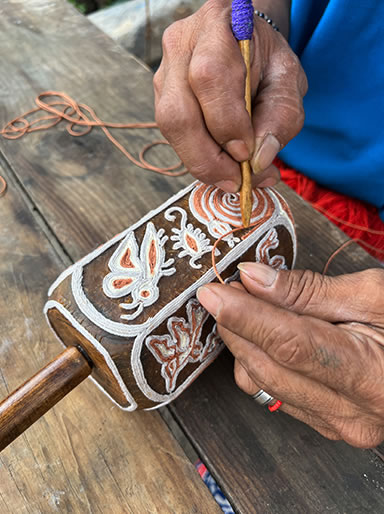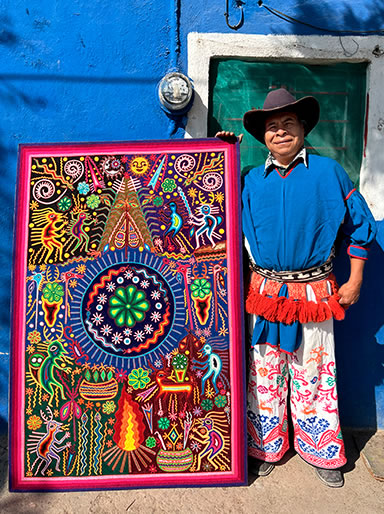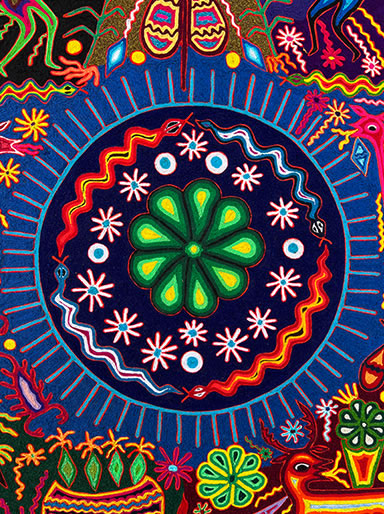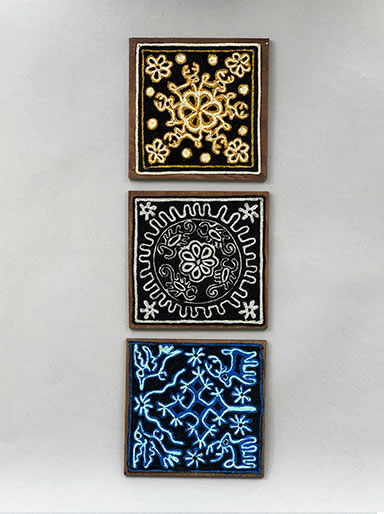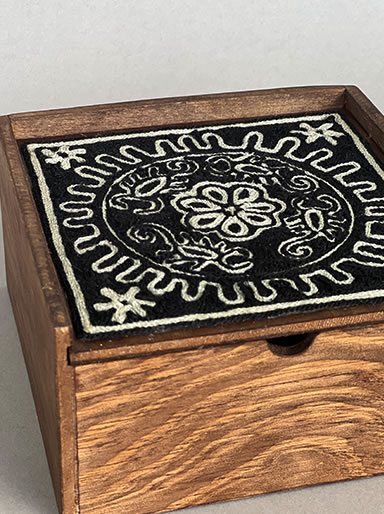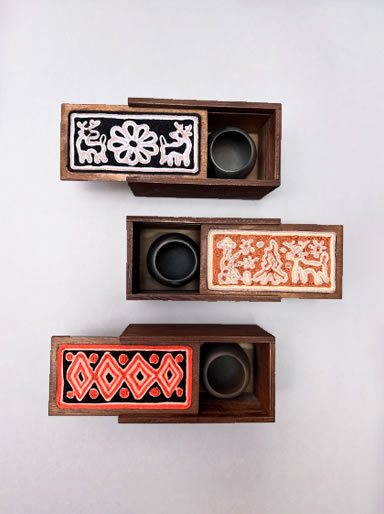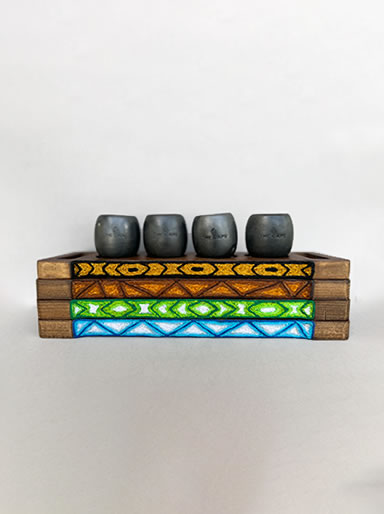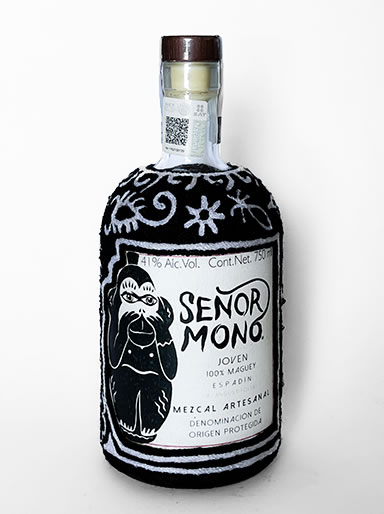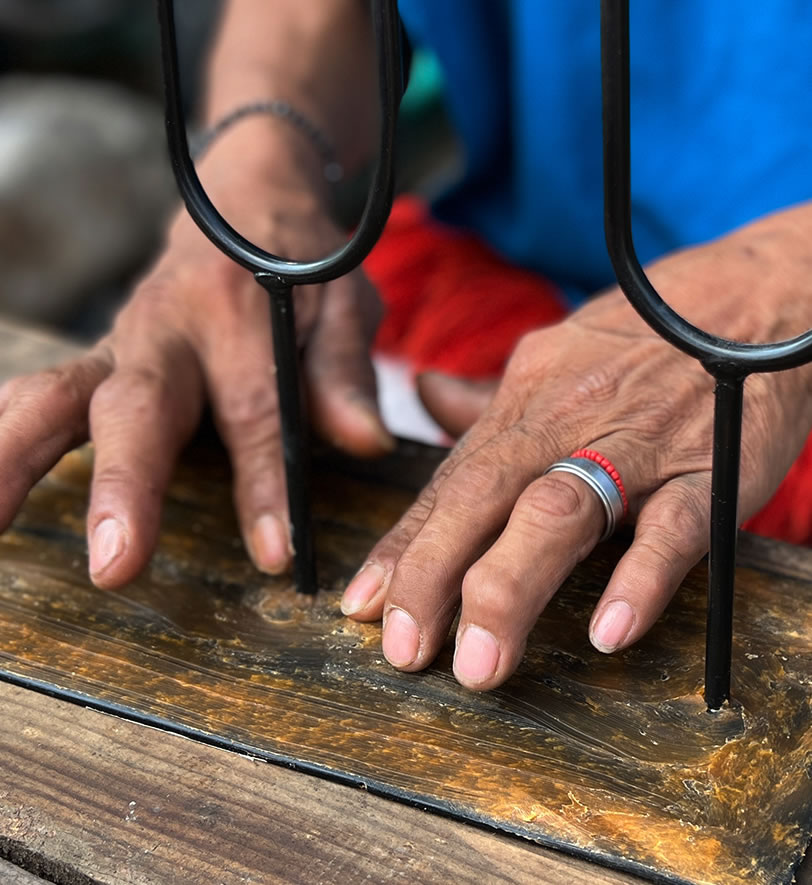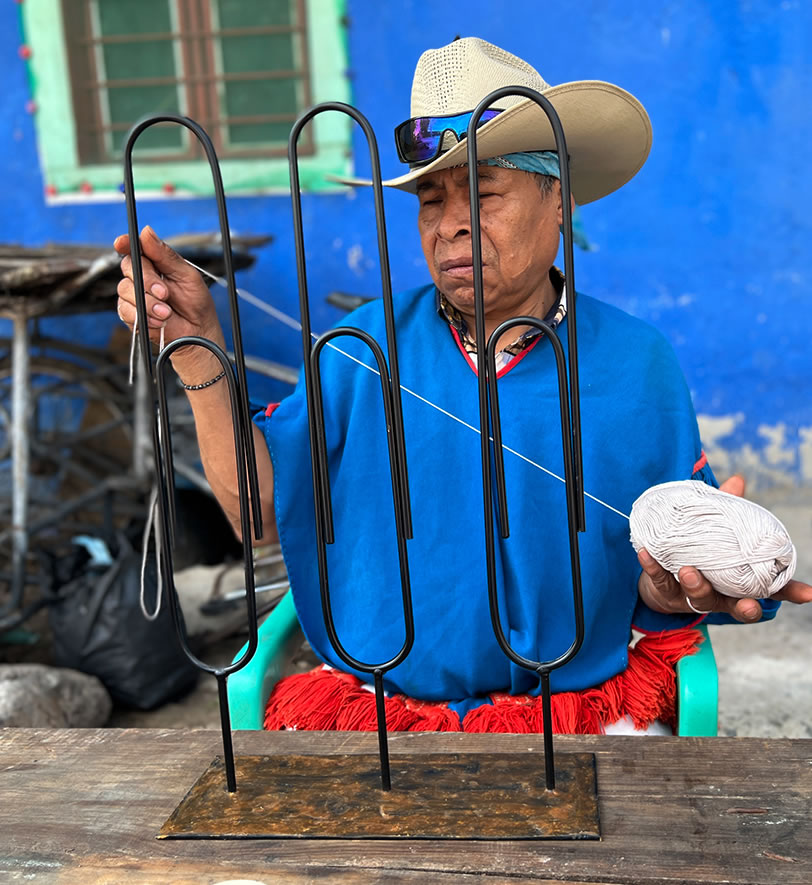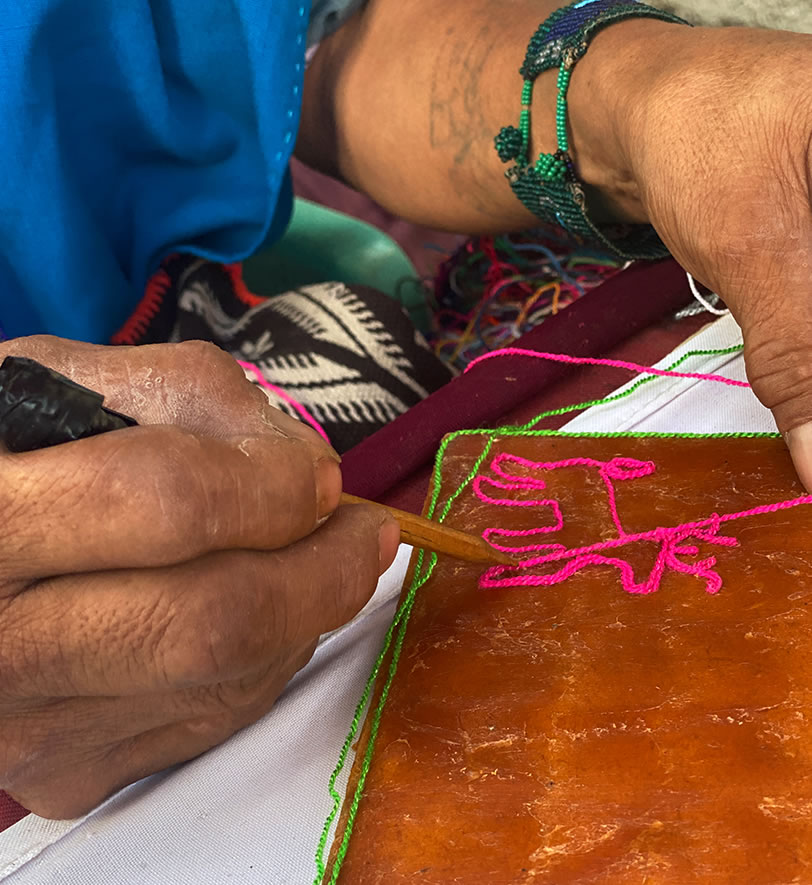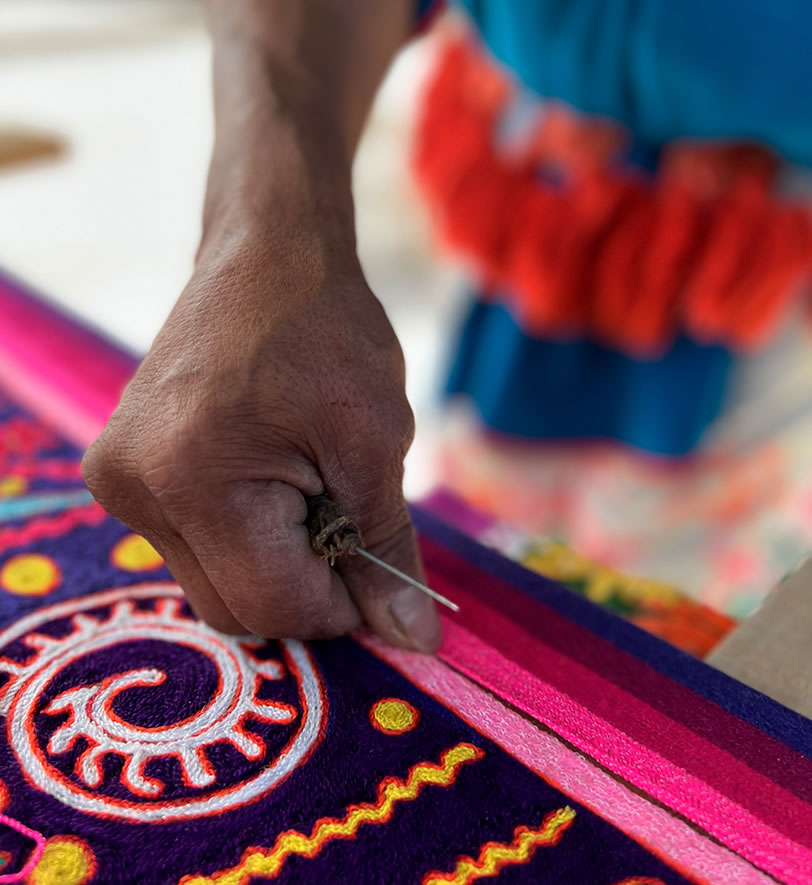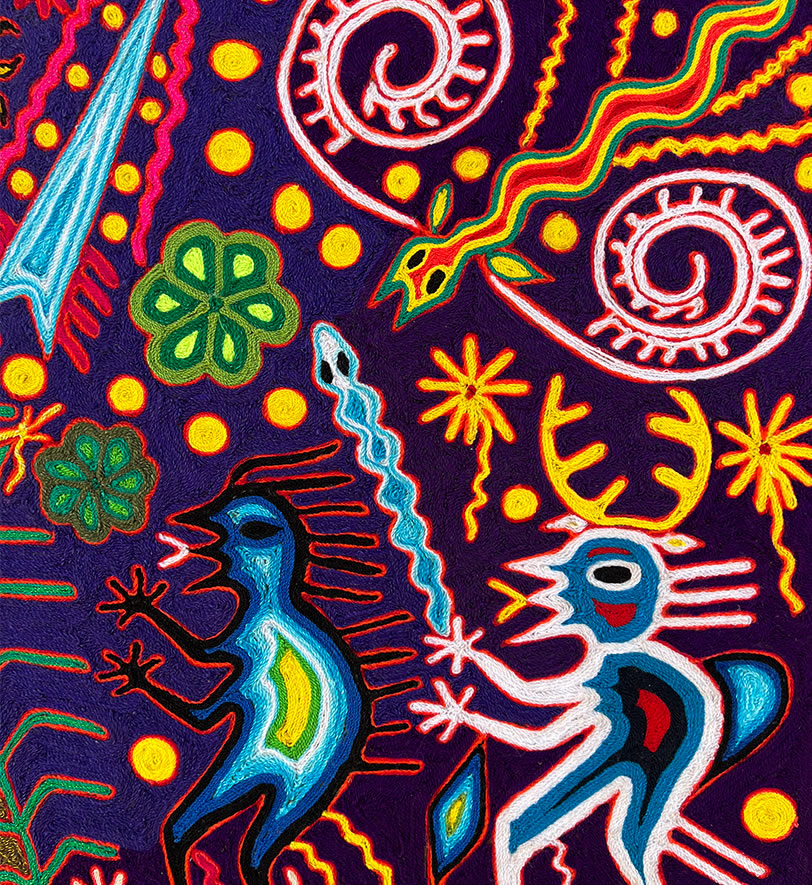History
For many years, the Wixárika people were commonly referred to as "Huicholes," which means "the ones who flee." The term "Wixárika" actually means "people of deep heart who love knowledge." Therefore, in the process of reclaiming indigenous identity, they have fought and emphasized being called Wixárika to honor their heritage.
The Wixárika people are considered one of the ethnic groups with the richest cultural heritage and ancient history in Mexico. They are regarded as "the purest people" due to their preservation of beliefs, traditions, and customs that have survived the Spanish conquest. However, their handicrafts have evolved over time.
Process
Waxing
Manually apply a layer of wax that covers the entire surface. Nowadays, resin is also used for added durability. Thanks to the warmth of the hand, the wax slides on the surface.
Creativity
The artist envisions what they want to portray in the piece and determines the colors they will use.
Placement
The authenticity of the artist begins as they imagine the figures and colors they want to portray. The placement of yarn is done with the help of a fine tool that provides structure to outline the design and later fill in the figure.
Detail
The artwork is meticulously reviewed, and additional yarn is added if necessary. The piece is enveloped with so much color and texture that each time you look at it, you can observe a different form of it.
With each yarn, a story is told.

